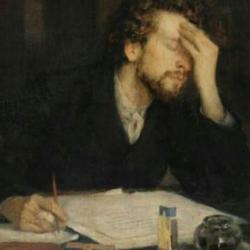Following is a set of notes for a lecture given at the Biblical Horizons conference, July 21. I will deliver the same lecture as part of a series on Shakespeare’s Classical World at the NSA Summer Institute next week.
Shakespeare’s Classical World
INTRODUCTION
There are a variety of ways to approach the topic of these lectures. We could trace Shakespeare’s quotations and allusions to classical sources. We could assess the influence of classical writers on Shakespeare. These are valuable exercises, and we will do some of this. My main goal, however, is to try to discern how Shakespeare, as a Christian playwright, assesses the ancient world. What strengths does he see in Greece and Rome? What are their weaknesses and breaking points?
This first lecture will provide background and an survey of the landscape.
ROME AND THE ELIZABETHAN IMAGINATION
We will begin by examining some aspects of the Elizabethan Renaissance perception of the classical world. Two qualifications are necessary at the outset. First, Rome loomed much larger for the Elizabethans than it does for us, and much larger than Greece. We tend to look back to Greece as the main pagan source for Western civilization, but that is a modern perspective, one that took hold in the last century when Greek studies were revived by German thinkers as an alternative to Christianity. Elizabethans viewed Rome as the great pagan alternative to Christendom. One indication of this is the large number of Roman plays produced in the late sixteenth and early seventeenth centuries.
Second, there was no single Elizabethan view of ancient Rome. For Elizabethans, Rome was a source for reflection and argument, for moral and political wisdom, but there was no single perspective. Debates concerning contemporary political and moral issues often appealed to Roman history, or made some incident of Roman history the focal point of a disputatio. Melanchthon, for instance, suggested that students debate the justice of tyrannicide by debating the ins and outs of the assassination of Julius Caesar. When Shakespeare wrote plays on these subjects, he was intervening in contemporary debates.
Shakespeare wrote a number of works set in ancient Greece ( Troilus and Cressida ; Timon of Athens ; Midsummer Night’s Dream ; Venus and Adonis ), but for the most part these are set in a mythological Greece, not in the historical Athens, about which Shakespeare probably knew very little. The Roman plays, however, are more historically rooted, and Romanness, with its assciated politics, values, and character, play an important role these plays.
FEATURES OF SHAKESPEARE’S VIEW OF ROME
What elements do Shakespeare’s Roman plays have in common? First, they are all set in ancient Rome, and were staged in Roman costume and with Roman sets. Second, blood, mutilation, violence, and mayhem are important features of these plays. Titus Andronicus is far and away the most gruesome in this respect. There is a dismemberment and sacrifice on stage at the beginning; Aaron kills his baby’s nurse on stage; Lavinia’s tongue is cut out after a rape, and her arms are cut off; Titus cuts off his own arm on stage; he slits the throats of Tamora’s sons, and cooks them into a meatloaf; the play ends with a series of stabbings. Blood and violence are constants in the Roman plays. Elizabethans sometimes found grotesque comedy in these violent acts, and these acts of violence sometimes had an important political dimension (Coriolanus showing his wounds).
Third, this violence often turns on itself. Many English writers comment on the factionalism and civic strife of ancient Rome, and Shakespeare depicts this in Coriolanus and Julius Caesar . Fourth, suicide is an important Roman custom. Brutus and Cassius, Antony, and Portia all commit suicide, and Coriolanus also submits to death at the hands of the Volscians. Shakespeare’s suicide scenes, however, are often ironically undercut.
Finally, Shakespare depicts the Romans as self-conscious, theatrical, and historically aware characters. Many refer to themselves in the third person. Rhetoric plays an important role in many of thee plays. The characters are aware that they are players in events that will shape the course of history, and they often ceremonialize this awareness.
CONTEMPORARY ROME
For Elizabethans, Roman power was not something in the distant past. The Eastern empire fell in 1453, and Papal Rome’s dominance of England ended only with the reign of Henry VIII. The defeat of the Spanish Armada in 1588 was seen as a victory over Rome, as was the foiling of the Guy Fawkes plot to blow up Parliament (still celebrated in England). Shakespeare is aware of the debates between Catholic and Protestant, and is often writing in two registers when he writes about Rome. In Julius Caesar , Decius says that Romans will dip cloths in Caesar’s blood for “relics,” and in Titus Andronicus there are anachronistic references to monasteries, “popish tricks,” and martyrdom.
Another contemporary setting is evoked by the Roman plays: the court of James I. James styled himself a “new Augustus,” and saw himself as a uniter and pacifier of Britain, as Augustus had been of Rome. James’ court was also notoriously dissolute, with excessive banquets and sexual scandals galore. Shakespeare’s original audience might occasionally have detected a reference to James’ court in his plays.
This is not to say that the Roman plays are “tracts for the times,” or straightforward commentary on current events. But this was an undercurrent, a layer, in the Roman plays.
INFLUENCES
What did Shakespeare get from the classical world, and the Roman world in particular? Above all, he received a theatrical tradition. During the Middle Ages, Greek and Roman drama fell into obscurity, and a wholly new dramatic tradition grew up around liturgical events of the medieval church. During the Renaissance, classical drama was revived, and classically-influenced theaters were built. The greatest influence on Renaissance drama came from Rome rather than from Greece.
In addition to this general inheritance, Shakespeare was influenced by many classical, usually Latin writers, and he borrowed plots, images, characters, incidents, and just about everything else from these sources. The main writers were Ovid, Plautus, Seneca, and Plutarch.
Ovid’s Metamorphoses was a big hit in Renaissance Europe, and left its marks all over Shakespeare. The Pyramus and Thisbe play at the end of Midsummer Night’s Dream is a burlesque of a story told by Ovid, and one of Shakespeare’s earliest works, Venus and Adonis , is a much-expanded telling of another story from the Metamorphoses .
Plautus was a Roman comic playwright and leader of the “New Comedy” movement. A Comedy of Errors is drawn very directly from a play by Plautus.
Seneca was the most influential classical tragedian during the Renaissance. His blood-soaked tales of revenge, with their ghosts, tortures, mutilations, and men of towering ambition inspired many imitators in the Renaissance. Hamlet is a Senecan revenge hero with a Christianized conscience, as is Macbeth . Certain lines of Shakespeare’s great tragedies appear to be inspired by Seneca.
Finally, Plutarch’s Parallel Lives was Shakespeare’s major source for the Roman history plays. Plutarch’s work is a collection of brief biographies; he pairs a Greek and a Roman who share some common character traits, tells the life story of each, and then compares and contrasts the two men. Shakespeare used the English t
ranslation of Thomas North as the main source for Coriolanus , Julius Caesar , and Antony and Cleopatra .















